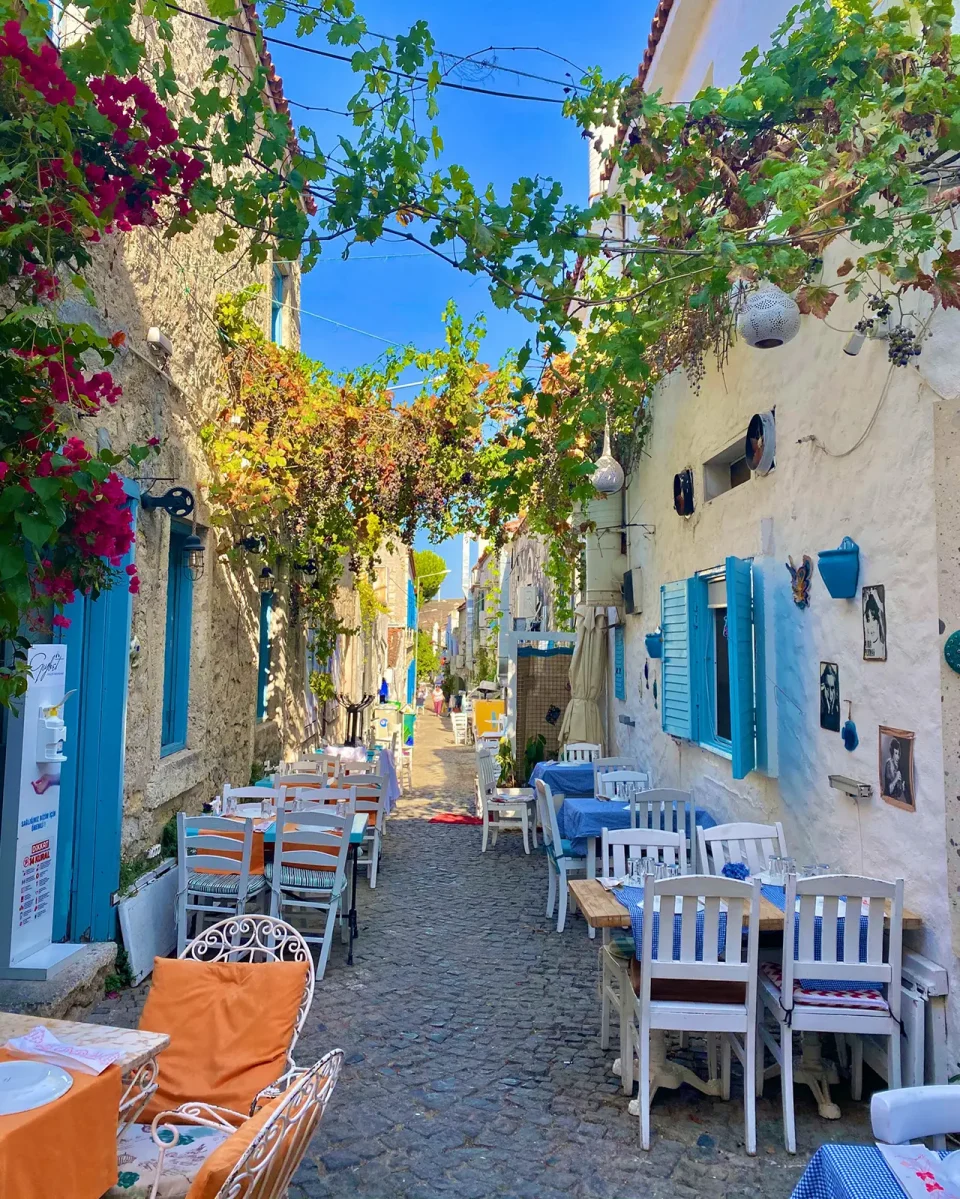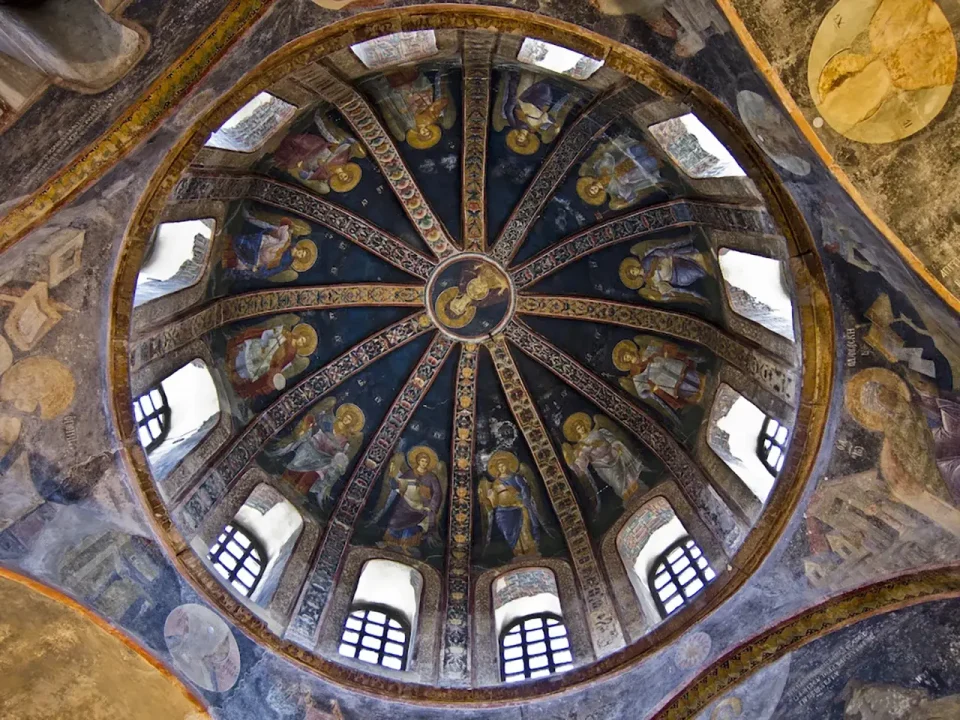Nestled deep within the rugged desert canyons and wind-sculpted sandstone cliffs of southern Jordan lies the ancient city of Petra, a UNESCO World Heritage site and one of the world’s most iconic archaeological treasures. Often referred to as the “Rose City” due to the unique pinkish hue of its rock-carved architecture, Petra has captivated the imagination of travelers, archaeologists, and historians alike for centuries. In this in-depth blog post, we will guide you through the enchanting history, unparalleled beauty, and must-see highlights of Petra, offering an immersive experience that you won’t soon forget.
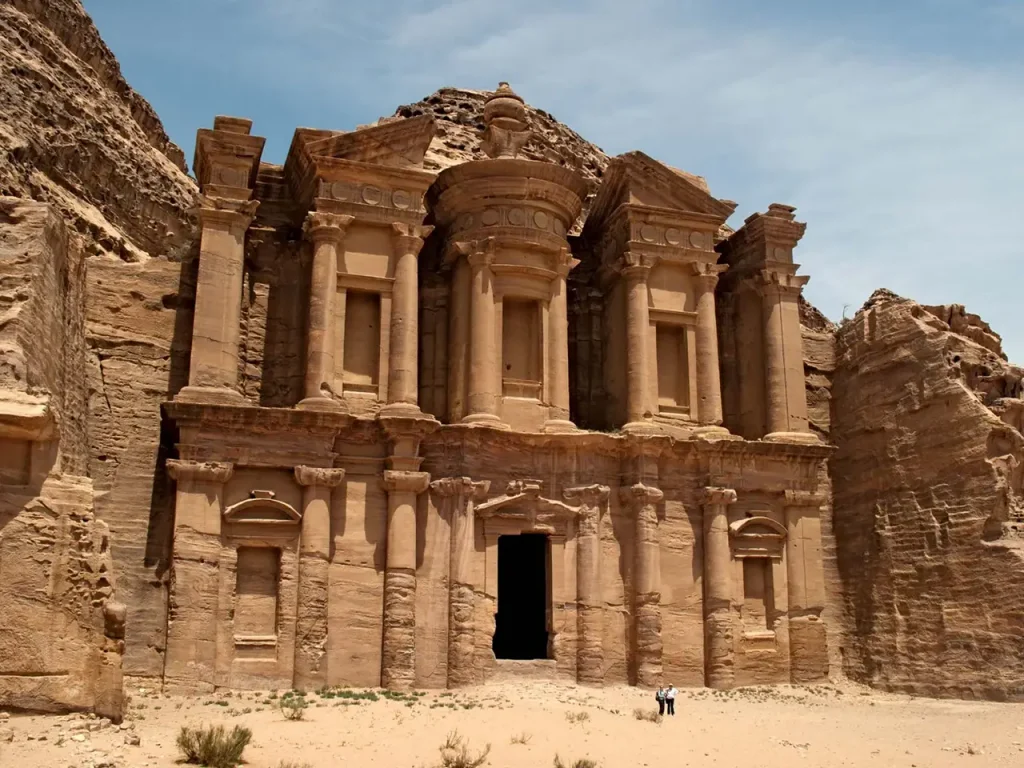
Table of Contents
A Brief History of Petra: Origins and Rise to Prominence
The origins of Petra date back to as early as the 4th century BCE, when it was established by the Nabataeans, an ancient Arab people renowned for their architectural and engineering prowess. Strategically located at the crossroads of ancient trade routes, Petra quickly grew into a thriving and prosperous city, serving as the capital of the Nabataean Kingdom. The Nabataeans controlled the lucrative spice trade and expertly managed the scarce water resources of the desert, establishing a network of dams, cisterns, and aqueducts that sustained the city’s population.
By the 1st century CE, Petra’s wealth and influence were at their peak, with the city’s population estimated to have reached around 30,000 inhabitants. Its stunning rock-cut architecture, monumental tombs, and sophisticated water management systems are a testament to the ingenuity and artistic vision of the Nabataeans.
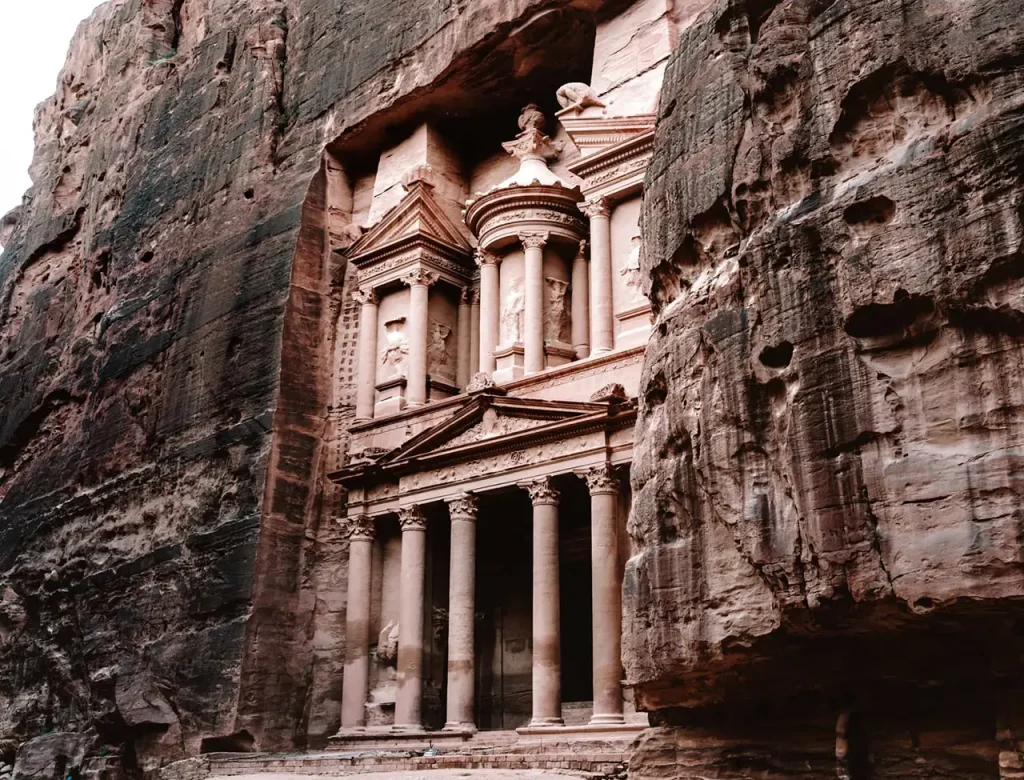
Roman Annexation and the Gradual Decline of Petra
n 106 CE, the Roman Empire annexed the Nabataean Kingdom, and Petra became part of the Roman province of Arabia Petraea. Under Roman rule, the city continued to flourish, and several new structures were built, including a colonnaded street, a theater, and monumental arches. However, the gradual shift of trade routes and the rise of competing trading centers led to a slow decline in Petra’s prominence.
By the time the Byzantine Empire took control of the region in the 4th century CE, Petra’s population had dwindled significantly. The city became an important Christian center, with several Byzantine churches erected during this period. However, a devastating earthquake in 363 CE caused extensive damage to Petra’s infrastructure, further contributing to its decline.
Rediscovering Petra: From Obscurity to Global Fame
For centuries, Petra lay hidden from the Western world, known only to local Bedouin tribes who called the area home. In 1812, Swiss explorer Johann Ludwig Burckhardt, disguised as an Arab traveler, “rediscovered” the ancient city and introduced it to the Western world. Since then, Petra has captured the hearts of countless adventurers, archaeologists, and tourists, becoming one of the most famous and sought-after travel destinations in the world.

Entering the Lost City: The Magical Siq
The journey into Petra begins with a walk through the Siq, a narrow, winding gorge that stretches for approximately 1.2 kilometers (0.75 miles) and serves as the main entrance to the ancient city. The Siq is a geological wonder, with its towering sandstone walls, which reach heights of up to 200 meters (656 feet), casting dramatic shadows and creating an otherworldly atmosphere. As you navigate the twists and turns of the Siq, the anticipation builds until you catch your first glimpse of the Treasury, or Al-Khazneh, one of Petra’s most iconic monuments.
The Treasury: Petra’s Crown Jewel
The Treasury, also known as Al-Khazneh, is without a doubt the most famous and instantly recognizable monument in Petra. As you emerge from the Siq, this magnificent facade, carved directly into the rose-colored sandstone cliff, stands as a testament to the artistic genius and architectural mastery of the Nabataeans. The Treasury is believed to have been constructed in the 1st century BCE, and while its exact purpose remains a mystery, it is thought to have served as a royal tomb or temple.
The elaborate facade of the Treasury features intricate carvings and Hellenistic architectural elements, including Corinthian capitals, friezes, and mythological figures. Standing at an impressive 40 meters (131 feet) high and 28 meters (92 feet) wide, the Treasury is an awe-inspiring sight that leaves visitors spellbound.
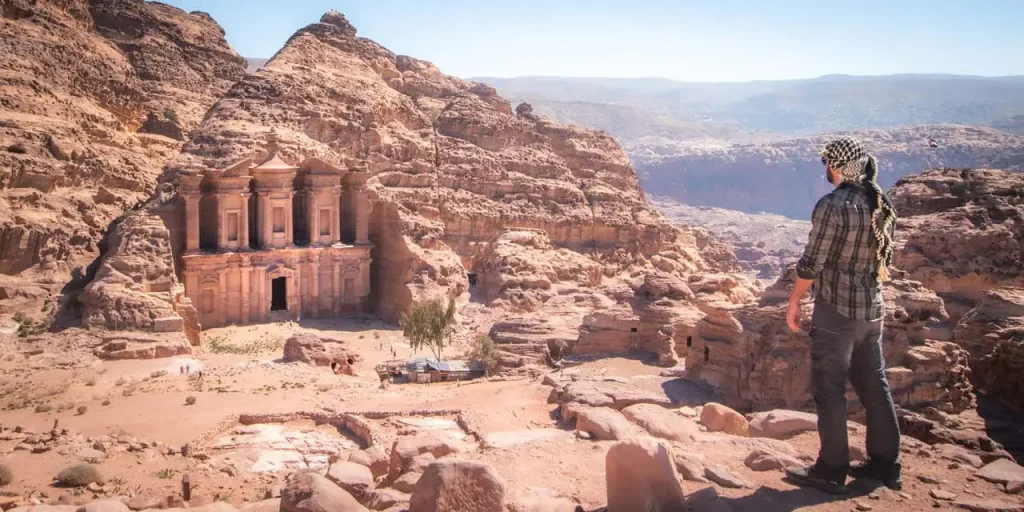
The Royal Tombs: A Testimony to Nabataean Nobility
As you venture deeper into Petra, you will encounter a series of remarkable tombs carved into the cliffs, known collectively as the Royal Tombs. These monumental tombs, which include the Urn Tomb, the Silk Tomb, the Corinthian Tomb, and the Palace Tomb, showcase the incredible craftsmanship and attention to detail of Nabataean artisans. The tombs are believed to have been the final resting places of Nabataean royalty and high-ranking officials, and their grandeur is a reflection of the immense wealth and power of Petra during its heyday.
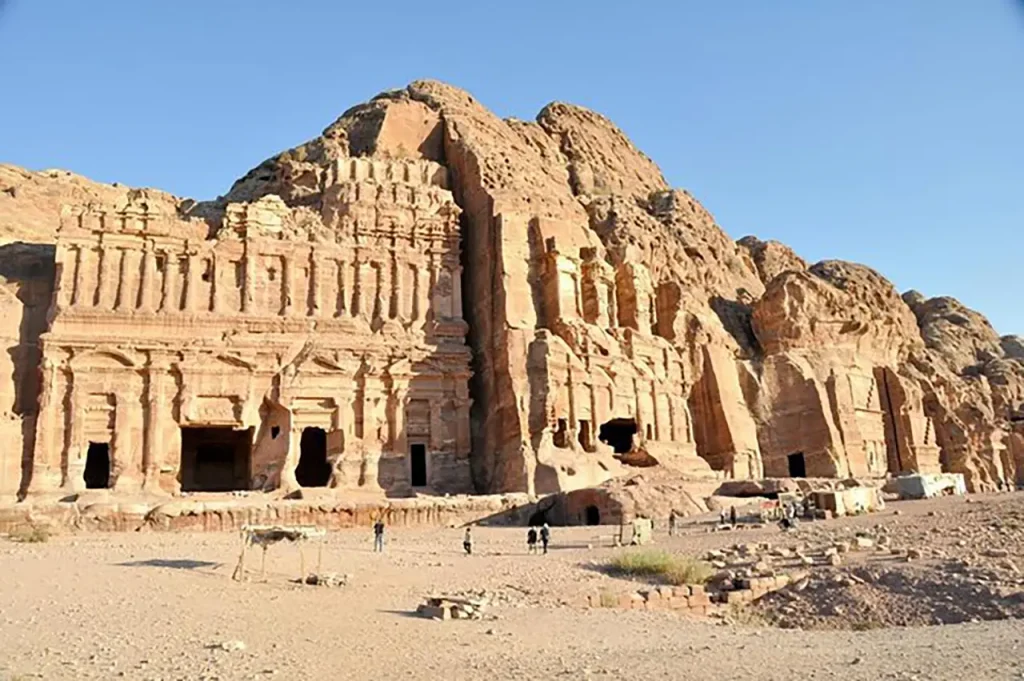
The Monastery: A Secluded Masterpiece
The Monastery, or Ad-Deir, is another of Petra’s must-see monuments, located high in the mountains and accessible by a steep climb up a winding path of over 800 steps. This arduous journey is well worth the effort, as you are rewarded with breathtaking views of the surrounding landscape and the stunning facade of the Monastery itself. Like the Treasury, the Monastery is an enormous rock-cut structure, featuring a similar Hellenistic architectural style, albeit on a larger scale.
The Monastery’s remote location and relative seclusion from the rest of Petra lend it an air of tranquility and peacefulness that is truly unique. The structure is believed to have served as both a temple and a meeting place for religious ceremonies, with its construction dating back to the 1st century BCE.
The Great Temple and the Roman Theater: A Glimpse into Petra’s Public Life
In addition to its famous tombs and monumental structures, Petra also boasts several impressive public buildings that offer insight into the daily lives of its ancient inhabitants. The Great Temple, an expansive complex situated in the city center, is thought to have been a significant religious and administrative center for the Nabataeans. The temple’s grand columns, ornate carvings, and sprawling courtyards provide a fascinating look into Petra’s vibrant past.
Just a short distance from the Great Temple lies the Roman Theater, a striking example of Roman architectural influence in Petra. With a seating capacity of around 6,000 spectators, this massive theater was carved into the hillside and likely hosted a variety of performances and public events.
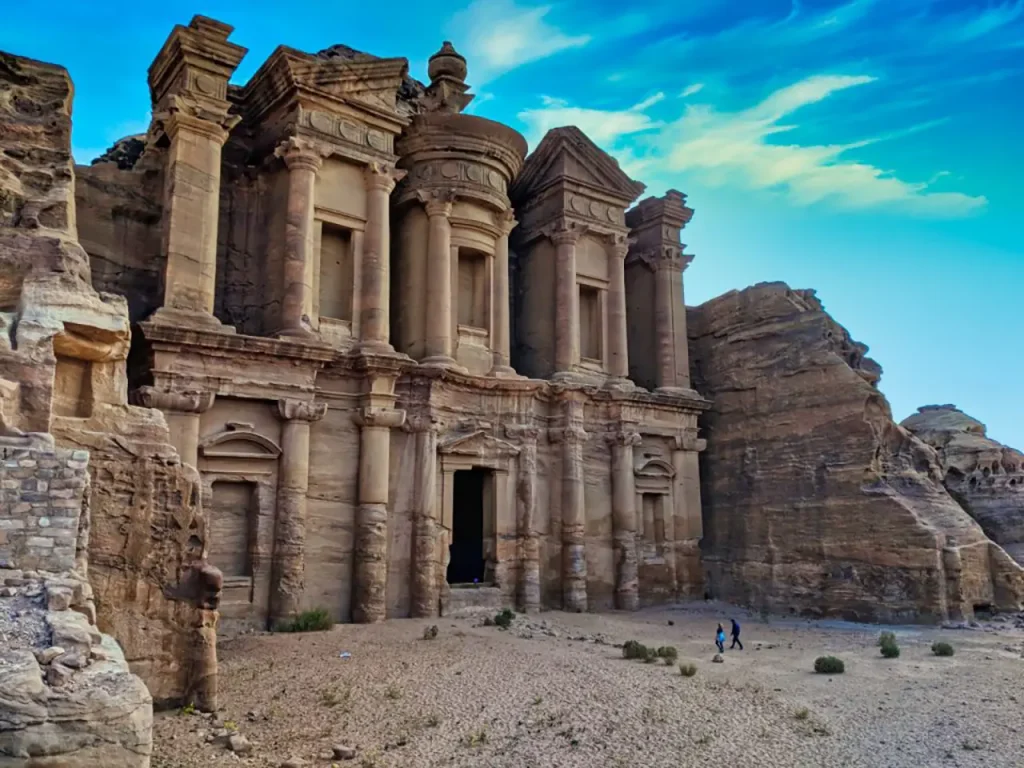
Exploring Petra’s Hidden Treasures: Off-the-Beaten-Path Adventures
While Petra’s iconic monuments are undoubtedly the main draw for most visitors, the ancient city is also home to numerous lesser-known gems that are well worth exploring. From the High Place of Sacrifice, an ancient Nabataean religious site offering spectacular panoramic views, to the Byzantine-era Petra Church with its stunning mosaic floors, there is no shortage of hidden treasures waiting to be discovered by intrepid travelers.
Visiting Petra: Practical Tips and Best Practices
When planning a trip to Petra, it’s essential to come prepared for the desert climate and the physically demanding nature of exploring the site. Here are some practical tips and best practices to help ensure a memorable and enjoyable visit:
- Wear comfortable shoes: With miles of trails and steep climbs, it’s crucial to wear sturdy and comfortable footwear that can handle the rugged terrain.
- Dress in layers: The desert can be scorching hot during the day and cool at night, so dressing in layers is essential for staying comfortable throughout your visit.
- Stay hydrated: Make sure to carry plenty of water with you, as the desert heat can be intense and dehydration is a real concern.
- Protect yourself from the sun: Wear a hat, sunglasses, and sunscreen to protect yourself from the harsh desert sun.
- Plan your visit strategically: To avoid the largest crowds and the most intense heat, try to arrive at the site early in the morning or later in the afternoon.
- Hire a local guide: To gain a deeper understanding of Petra’s history and significance, consider hiring a local guide who can provide expert insights and help you navigate the vast site.
- Be respectful of the local culture: Remember that Petra is not only a tourist attraction but also a site of immense cultural and historical significance. Be respectful of the local customs, traditions, and beliefs.
Latest Video on Our YouTube Channel
History of Jordan
The history of Jordan, a country located in the heart of the Middle East, is rich and diverse, spanning thousands of years. From ancient civilizations and biblical history to the modern era and Arab-Israeli conflict, Jordan has played a crucial role in the region’s development.
Prehistoric Period: Archaeological evidence suggests that the area now known as Jordan was inhabited as far back as the Paleolithic period, around 200,000 years ago. During the Neolithic period (approximately 8500-4500 BCE), the inhabitants of the region began to settle and develop agriculture.
Ancient Civilizations: Jordan was home to several ancient civilizations, such as the Canaanites, Ammonites, Moabites, and Edomites. The Ammonites established their capital at Rabbath Ammon, now modern-day Amman, the capital of Jordan. The Moabites and Edomites were also prominent in the area and mentioned frequently in biblical accounts.
Classical Period: During the Classical period, Jordan was part of several empires, including the Persian, Hellenistic, and Roman Empires. Alexander the Great conquered the region in the 4th century BCE, marking the beginning of Hellenistic rule. The Nabateans, an Arab people, established their kingdom in southern Jordan, with the city of Petra as their capital. Petra, known for its stunning rock-cut architecture, became a significant trade center during this time.
Roman and Byzantine Rule: In 63 BCE, the Roman Empire conquered the region, integrating it into the province of Arabia Petraea. The Romans built several cities in Jordan, such as Gerasa (modern-day Jerash) and Philadelphia (modern-day Amman). The region prospered under Roman rule, with trade and agriculture flourishing. With the division of the Roman Empire in 395 CE, Jordan fell under the jurisdiction of the Byzantine Empire. Christianity spread throughout the region, and many churches and monasteries were built during this period.
Islamic Conquest and Arab Rule: In the 7th century CE, Arab Muslim forces conquered Jordan as part of the broader Islamic expansion. The region became part of the Umayyad Caliphate and later the Abbasid Caliphate. During the Crusades in the 11th and 12th centuries, Jordan became a battleground between Muslim and Christian forces, with several Crusader castles built across the region.
Ottoman Rule: In the early 16th century, the Ottoman Empire annexed Jordan, incorporating it into the empire as part of the Damascus province. Jordan remained under the Ottoman rule for the next four centuries, during which time its economic and political importance diminished.
Arab Revolt and British Mandate: During World War I, the Arab Revolt, led by Sharif Hussein of Mecca and his sons, sought to establish an independent Arab state in the region. The British, seeking to weaken the Ottoman Empire, supported the revolt. After the war, the League of Nations granted Britain a mandate over Transjordan, the area east of the Jordan River. In 1921, the British appointed Abdullah I, the son of Sharif Hussein, as the emir of Transjordan.
Independence and the Hashemite Kingdom of Jordan: On May 25, 1946, Transjordan gained its independence from Britain, and Abdullah I became king, establishing the Hashemite Kingdom of Jordan. In 1948, Jordan participated in the Arab-Israeli War, during which it occupied the West Bank and East Jerusalem, later annexing these territories in 1950.
Jordan experienced political turbulence in the 1950s and 1960s, with several coup attempts and the assassination of King Abdullah I in 1951. His grandson, King Hussein,
Conclusion
A visit to Petra, Jordan, is a once-in-a-lifetime experience that transports travelers back in time to a world of ancient wonders and architectural marvels. From the iconic Treasury and Monastery to the lesser-known gems that lie off the beaten path, Petra offers an unforgettable journey through the heart of the Nabataean Kingdom. With its rich history, breathtaking natural beauty, and awe-inspiring monuments, the Rose City of Petra is truly a destination that belongs on every traveler’s bucket list. So pack your bags, lace up your hiking boots, and prepare to embark on an adventure like no other in the captivating world of Petra, Jordan.

